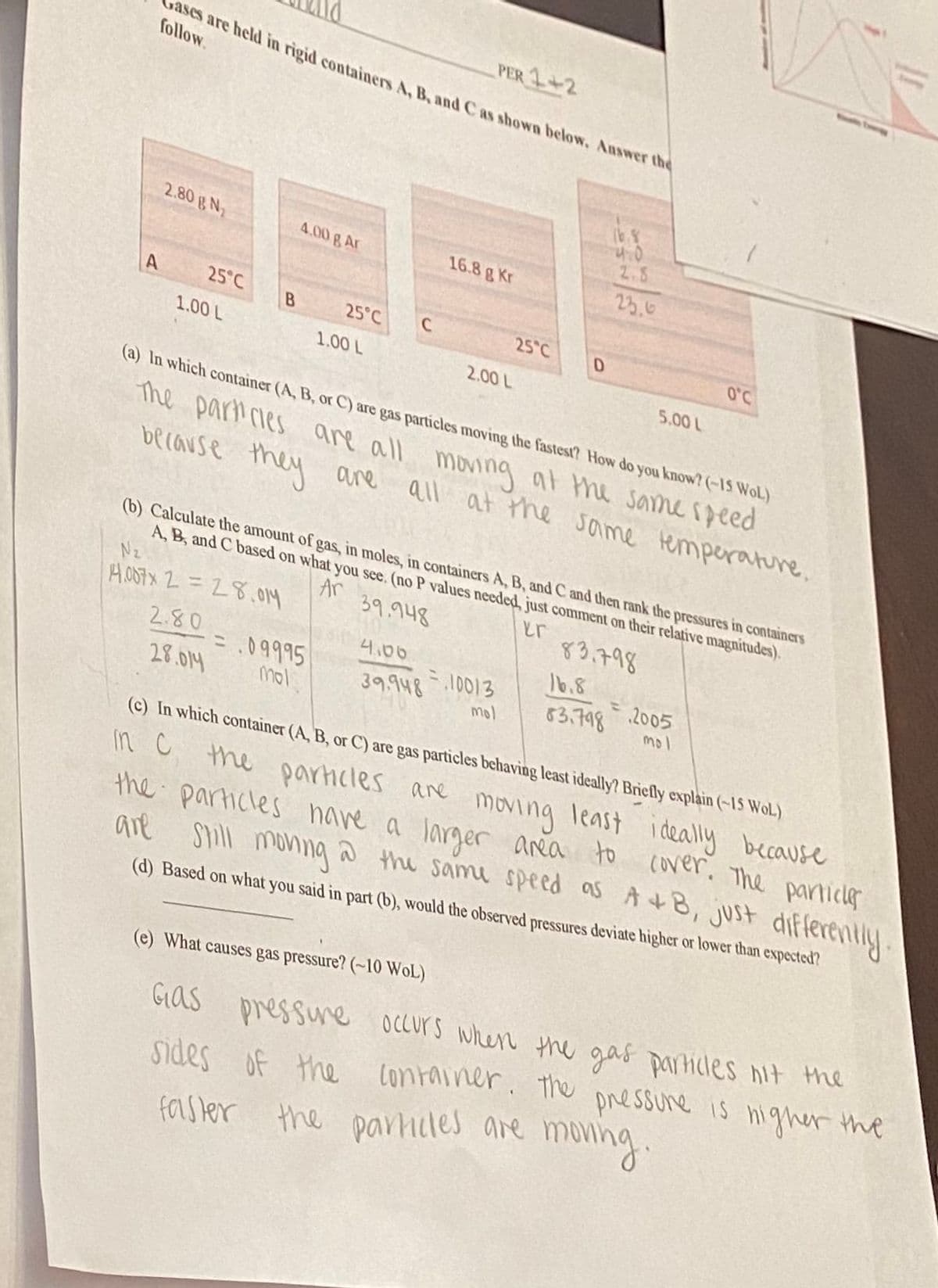PER 1+2 are held in rigid containers A., B, and C as shown below. Answer the follow, 2.80 g N 2.8 4.00 g Ar 16.8 g Kr 25.6 25°C B 25°C 25°C O'C 1.00 L 1.00 L 2.00 L 5.00 L (a) In which container (A, B, or C) are gas particles moving the fastest? How do you know? (-15 WoL) The parlicies are all moving at the same speed because e same temperature, they are all at the (b) Calculate the amount of gas, in moles, in containers A, B, and C and then rank the pressures in containers A, B, and C based on what you see. (no P values needed, just comment on their relative magnitudes). Nz Ar 39.748 er 83.798 H.O07X 2 =28.014 16.8 63.798 4,00 2.80 こ = 10013 , 0৭११5 mol 2005 28.014 39.948 mol mol (c) In which container (A, B, or C) are gas particles behaving least ideally? Briefly explain (-15 WoL) in C are moving least because the particles have a are Sill monng a the samu speed as A+B, just differentily ideally larger ana to cover. The panicla the particles (d) Based on what you said in part (b), would the observed pressures deviate higher or lower than expected? (e) What causes gas pressure? (~10 WoL)
Electronic Effects
The effect of electrons that are located in the chemical bonds within the atoms of the molecule is termed an electronic effect. The electronic effect is also explained as the effect through which the reactivity of the compound in one portion is controlled by the electron repulsion or attraction producing in another portion of the molecule.
Drawing Resonance Forms
In organic chemistry, resonance may be a mental exercise that illustrates the delocalization of electrons inside molecules within the valence bond theory of octet bonding. It entails creating several Lewis structures that, when combined, reflect the molecule's entire electronic structure. One Lewis diagram cannot explain the bonding (lone pair, double bond, octet) elaborately. A hybrid describes a combination of possible resonance structures that represents the entire delocalization of electrons within the molecule.
Using Molecular Structure To Predict Equilibrium
Equilibrium does not always imply an equal presence of reactants and products. This signifies that the reaction reaches a point when reactant and product quantities remain constant as the rate of forward and backward reaction is the same. Molecular structures of various compounds can help in predicting equilibrium.
Am I doing this correctly

Since you have posted a question with multiple sub-parts, we will solve first three sub-parts for you. To get remaining sub-part solved please repost the complete question and mention the sub-parts to be solved.
Given:
Container A: Volume = 1.00 L, temperature = 25oC, 2.80 g N2.
Container B : Volume = 1.00 L, temperature = 25oC, 4.00 g Ar.
Container C : Volume = 2.00 L, temperature = 25oC, 16.8 g Kr.
The average kinetic energy of a gas is directly related to the temperature.
The moles of gas can be determined using the molar mass as the conversion factor.
Step by step
Solved in 2 steps









